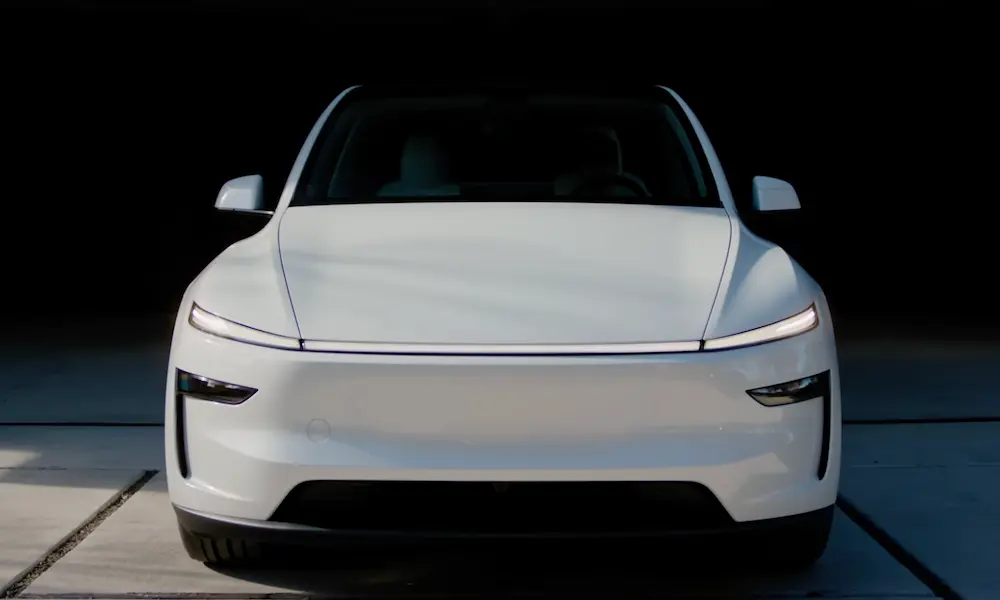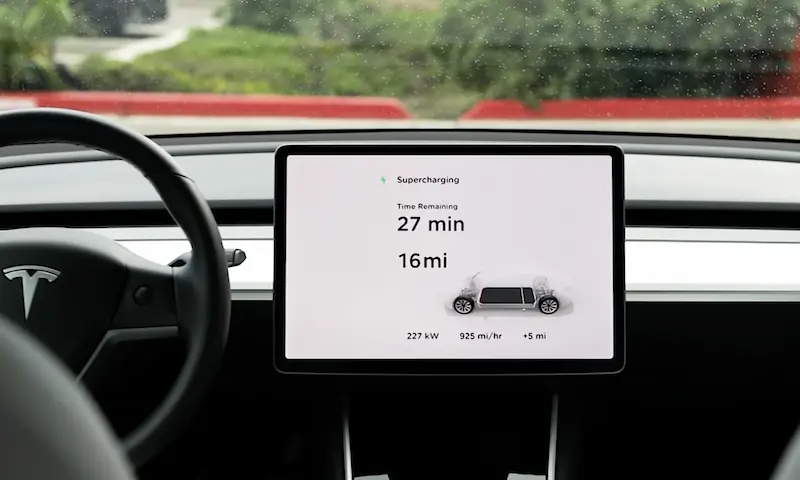You’re staring at that Tesla extended warranty offer in your inbox. The price tag makes you wince, but then you remember hearing about someone’s $5,000 repair bill. What’s the smart move here?
Let’s cut through the confusion and help you decide if Tesla’s Extended Service Agreement (ESA) deserves your hard-earned cash.
What Is Tesla’s Extended Service Agreement?
Tesla’s Extended Service Agreement is essentially extra protection that kicks in after your factory warranty expires. It covers many components for an additional 2-4 years depending on the plan you choose.
The ESA is available primarily for Model S and Model X vehicles, with costs ranging from $2,500 to $6,350 based on your model and desired coverage length. Each service visit comes with a $200 deductible, and all repairs must be performed at Tesla Service Centers.
But there’s a catch – or several. The ESA notably excludes some of the most expensive components in your Tesla: the battery, drive unit, and wear items like tires and brake pads. For Model 3 and Model Y owners, the options are even more limited, with inconsistent availability and coverage.
Tesla Repair Costs: The Reality Check
Before deciding on any warranty, you need to know what you’re protecting against. Tesla repair costs run approximately 27% higher than industry averages, which explains why many owners consider extended coverage.
Here’s what some common Tesla repairs might cost you without warranty protection:
| Component | Typical Repair Cost |
|---|---|
| Battery replacement | $13,000-$20,000 |
| Media control unit | ~$2,700 |
| Touchscreen | $1,000-$2,000 |
| Air suspension | $1,500-$5,000 |
| Complete drivetrain | $5,000+ |
These figures from Tesla Motors Club forums and Finance Yahoo show why the extended warranty conversation matters. One major repair could exceed the warranty’s cost, potentially making it worthwhile.
Tesla’s Reliability: Better or Worse Than Expected?
Tesla’s reliability record sends mixed signals. According to J.D. Power, Tesla ranks 30th in reliability, suggesting higher-than-average problems as vehicles age.
However, Tesla’s actual warranty claim rate was only about 1.3% in 2021, indicating that catastrophic failures might be less common than feared. This creates a paradox for potential warranty buyers – are you protecting against likely events or rare ones?
Owner experiences vary dramatically. Some report driving their Teslas for years with minimal issues, while others face expensive repairs like:
- $5,000 air conditioning system replacements
- $2,000+ control arm repairs
- Frequent electronic glitches requiring service
Tesla ESA vs. Third-Party Warranties
The ESA isn’t your only option. Third-party warranty providers have entered the Tesla ecosystem with some compelling alternatives.
| Feature | Tesla ESA | Third-Party Warranties |
|---|---|---|
| Cost | $2,500-$6,350 | $1,500-$6,000 |
| Coverage | Excludes battery, drive unit | Many include battery/drivetrain |
| Service Locations | Tesla Service Centers only | Multiple repair facilities |
| Added Benefits | OEM parts guaranteed | Often include roadside assistance |
The key tradeoff: Tesla’s ESA ensures you get genuine Tesla parts and service, while third-party warranties offer broader coverage and more flexibility.
What Tesla Owners Actually Say
Tesla forums and Reddit threads reveal divided opinions on the ESA’s value.
Supporters argue:
- “Peace of mind is worth the premium”
- “One major repair would cover the cost”
- “Tesla repairs are notoriously expensive”
Critics counter:
- “The $2,000-$3,500 cost rarely pays for itself”
- “The exclusion of the battery makes it less valuable”
- “Self-insuring through a savings account makes more sense”
Early Model S owners seem most satisfied with their warranty purchases, likely because those vehicles had more first-generation issues that needed repairs.
Financial Analysis: When Does the ESA Pay Off?
Let’s run the numbers. For a typical Model S ESA costing $4,000:
- If you experience zero issues: You’ve spent $4,000 for nothing
- If you need one $5,000 repair: You’ve saved $800 ($5,000 minus $4,000 cost minus $200 deductible)
- If you need multiple small repairs: It might pay off, but only if they total more than $4,200
The math suggests that for most owners, the ESA only becomes financially advantageous if you experience at least one significant repair during the coverage period.
Alternative Protection Strategies
Not sold on the ESA? Consider these alternatives:
- Self-insuring: Set aside the equivalent of the warranty cost in a dedicated savings account for potential repairs.
- Third-party warranties: Research options from providers experienced with EVs, comparing coverages and exclusions carefully.
- Credit card extended warranties: Some premium credit cards offer extended warranty protection on purchases, which might cover some repair costs.
- Certified Pre-Owned (CPO): If buying used, Tesla’s CPO program extends the warranty, potentially making a separate ESA unnecessary.
ESA Impact on Resale Value
A transferable ESA can boost your Tesla’s resale value by reassuring the next owner they won’t face unexpected repair costs. However, this advantage diminishes if:
- You sell to a buyer who doesn’t value warranties
- You sell so late that the extended warranty has minimal time remaining
- You trade in through Tesla’s own program, which already adjusts for remaining warranty
The resale benefit typically won’t cover the full cost of the warranty but might offset part of it.
Regional Variations in Tesla Warranty Options
Tesla’s warranty offerings vary significantly by region:
In the UK, Tesla’s ESA through Millenium Insurance extends coverage up to 4 years/50,000 miles but, like the US version, excludes the battery and drive unit. UK owners report costs between £1,500 and £2,500, with mixed experiences on claim approvals.
European owners often face different pricing structures and coverage terms, making direct comparisons difficult. Always check the specific terms available in your market before deciding.
Model-Specific Considerations
Your Tesla model significantly impacts whether an ESA makes sense:
Model S and X (especially 2012-2020):
- Higher complexity means more potential failure points
- More expensive components overall
- Full ESA coverage available
- Generally more likely to benefit from extended coverage
Model 3 and Y:
- Simpler design with fewer components to fail
- More recent manufacturing with improved reliability
- Limited ESA availability in many regions
- Less likely to need extensive repairs
Early production models of any Tesla vehicle tend to have more issues, making warranties more valuable for them.
How Tesla’s Service Center Experience Affects Warranty Value
Tesla’s service center network directly impacts your warranty experience. Before purchasing an ESA, consider:
- Service center proximity: Having to travel hours to the nearest service center diminishes the warranty’s convenience
- Service center reputation: Research local center reviews, as quality varies dramatically
- Appointment availability: Some regions face weeks-long waits for service, even with warranty coverage
- Loaner availability: Not all service centers provide loaners during repairs
The value of your warranty diminishes significantly if accessing service is difficult. Based on owner feedback, service quality varies dramatically by location.
Tesla Battery and Drive Unit: The Big Exclusions
The most puzzling aspect of Tesla’s ESA is that it excludes the two most expensive components: the battery and drive unit. This is significant because:
- Battery replacements cost $13,000-$20,000
- Drive unit failures typically run $5,000+
- These two components represent the highest financial risk
Tesla provides separate warranty coverage for these components (8 years/100,000-150,000 miles depending on model), but once that expires, you’re fully exposed to these costs even with an ESA in place.
For perspective, the National Highway Traffic Safety Administration data shows that while EV batteries are generally reliable, when they do fail, the repair costs are substantially higher than almost any other automotive component.
Making Your Decision: Is the Tesla ESA Worth It?
After analyzing costs, coverages, and real-world experiences, here’s when Tesla’s Extended Service Agreement makes the most sense:
Consider getting the ESA if:
- You own a Model S or X, especially from earlier production years
- You plan to keep your Tesla beyond the standard warranty
- You want guaranteed Tesla service with OEM parts
- You’re risk-averse and value peace of mind
- You have a nearby Tesla Service Center with good reviews
Skip the ESA if:
- You own a Model 3 or Y (generally more reliable)
- You’re mainly concerned about battery or drive unit failure (not covered)
- You’re disciplined enough to self-insure with a repair fund
- You plan to sell before standard warranty expiration
- Quality third-party warranty options are available in your area
The “right answer” varies based on your specific situation, risk tolerance, and which Tesla you drive.
The Bottom Line on Tesla’s Extended Warranty
Tesla’s Extended Service Agreement represents a classic insurance decision: you’re paying for protection against uncertain future events. For most owners, it comes down to your comfort with risk rather than pure financial calculation.
If you’re the type who sleeps better knowing you’re covered, or if you drive an older Model S or X with known issues, the ESA might be worth the premium. If you’re comfortable with some financial uncertainty or drive a newer, more reliable model, you might be better off banking that money yourself.
Remember that Tesla’s reliability continues to improve with each production year, potentially making extended warranties less necessary for newer vehicles. Your specific model, its age, your local service center quality, and your own risk tolerance should guide your final decision.












